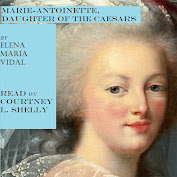From The Abbey of Misrule:
ShareLike St Govan himself, a mystery surrounds the chapel. It seems to have been built in the 13th or 14th century; and yet Govan is said to have lived in the 5th or 6th. The chapel was restored in the 1980s and today it receives a steady stream of tourists with cameras, like me. What it rarely seems to receive now is genuine pilgrims, or people in search of healing. This is 21st century Britain, after all. We don’t do that sort of thing any more. But long ago, we very much did: St Govan’s chapel was a place of pilgrimage - and, it is said, a place of miracles - for many centuries.
Inside, the chapel is damp, vaulted and spare. There is a small stone altar - just visible in the picture below.
[...]
None of this, though, answers the primal question that St Govan’s Chapel tantalisingly poses: just who was St Govan? Sometimes we find, especially as far back as the 5th or 6th centuries, that the sources are silent. On this occasion, they are almost too noisy. They tell us a lot, but none of it is conclusive.
For a start, we have the saint’s name. This is variously said to be Govan, Gowan, Goven, Gofan, Gobin, Gobhan, Gwalchmai - a mythic Welsh hero - or even Giovanni, the Italianised version of John. Some believe he was a local disciple of St Eilfyw, who baptised Wales’s patron saint David. Others identify him with an Irish monk, Gobhan, who is mentioned in medieval manuscript as a companion of another Irish saint, Ailbe. (Read more.)

















No comments:
Post a Comment